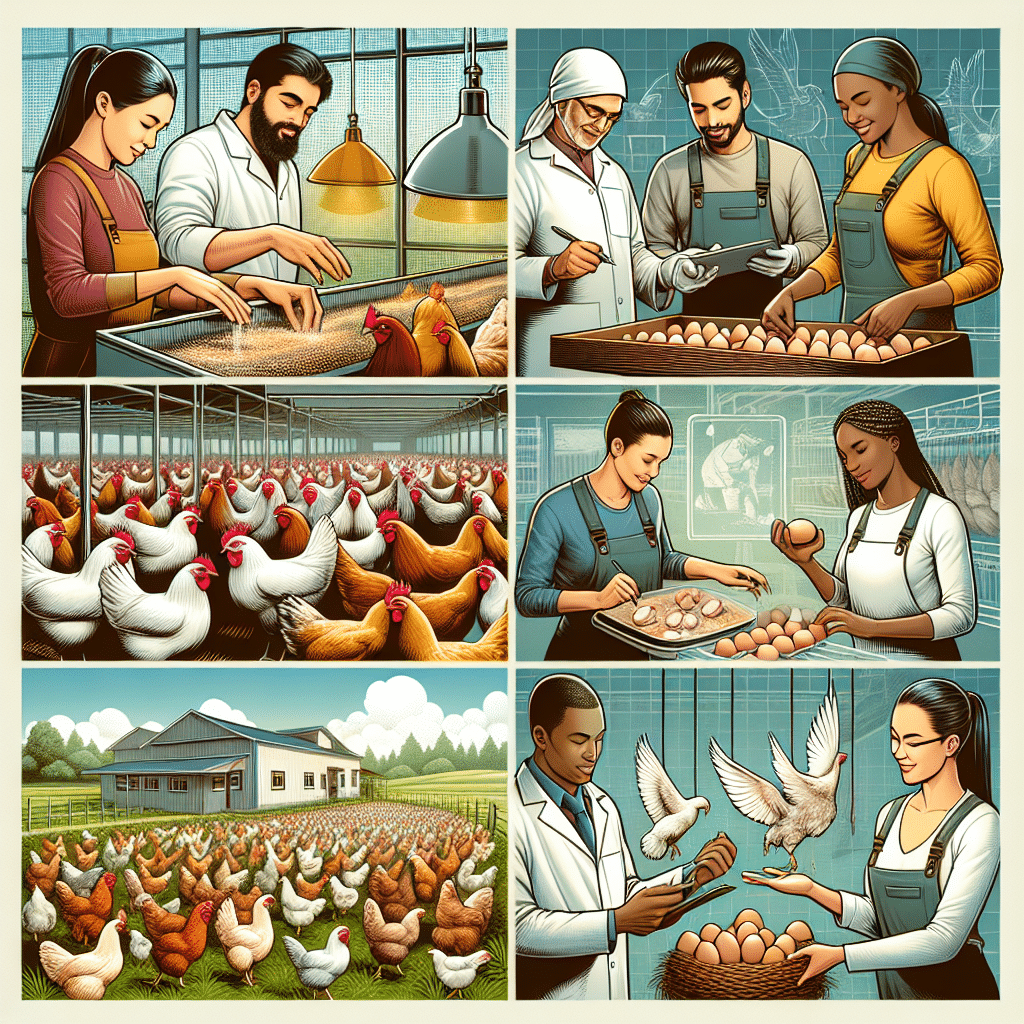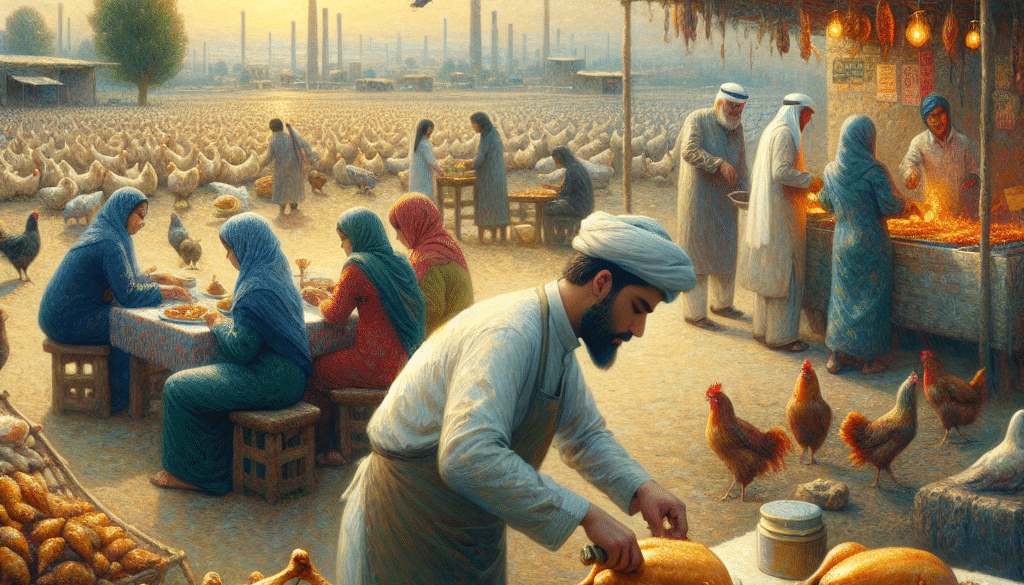Feeding the Growing Appetite for Poultry
-
Table of Contents
- Poultry Production: Meeting the Demand of a Growing Population
- Understanding the Poultry Demand Surge
- Challenges in Poultry Production
- Technological Innovations in Poultry Farming
- Case Studies: Success Stories in Sustainable Poultry Production
- Statistics: The Numbers Behind Poultry Consumption
- The Role of Alternative Proteins
- Conclusion: Feeding the Future
- ETprotein: Your Partner in Sustainable Protein Solutions
Poultry Production: Meeting the Demand of a Growing Population

The global appetite for poultry is on the rise, driven by a combination of population growth, rising incomes, and the perception of poultry as a healthy protein source. As the world’s population is projected to reach nearly 10 billion by 2050, the demand for poultry is expected to grow significantly. This article explores the challenges and strategies involved in feeding the growing appetite for poultry, with a focus on sustainable practices, technological advancements, and the role of alternative proteins.
Understanding the Poultry Demand Surge
The demand for poultry, particularly chicken, has been increasing steadily over the past few decades. Several factors contribute to this trend:
- Health Perceptions: Poultry is often seen as a healthier alternative to red meat due to its lower fat content and associated health benefits.
- Economic Growth: As economies grow, especially in developing countries, so does the purchasing power of individuals, leading to increased consumption of animal protein.
- Population Growth: The world’s population is expanding, and with it, the need for more food, including protein sources like poultry.
- Cultural Acceptance: Chicken and other poultry are widely accepted across various cultures and cuisines, making them a global staple.
Challenges in Poultry Production
Meeting the growing demand for poultry is not without its challenges. These include:
- Sustainability: Intensive poultry farming can have significant environmental impacts, including deforestation, greenhouse gas emissions, and water pollution.
- Animal Welfare: Concerns over the living conditions of poultry in large-scale farms have led to calls for more humane practices.
- Disease Outbreaks: High-density farming increases the risk of disease spread, such as avian influenza, which can devastate poultry populations.
- Feed Scarcity: The production of feed for poultry requires large amounts of water and arable land, which are finite resources.
Technological Innovations in Poultry Farming
To address these challenges, the poultry industry is turning to technology and innovation. Examples include:
- Precision Farming: Using data analytics and IoT devices to optimize feeding, monitor health, and reduce waste.
- Genetic Selection: Breeding programs that select for traits such as disease resistance and feed efficiency.
- Alternative Feeds: Research into feed alternatives, such as insects and algae, to reduce reliance on traditional grains.
- Robotics: Automated systems for tasks like feeding, cleaning, and egg collection to improve efficiency and animal welfare.
Case Studies: Success Stories in Sustainable Poultry Production
Several companies and countries have made strides in sustainable poultry production. For instance:
- Netherlands’ Poultry Innovations: Dutch companies have pioneered energy-neutral farms and closed-loop systems that recycle waste into energy.
- Vertical Farming in Asia: Singapore and Japan have developed vertical poultry farms that use less land and recycle nutrients.
Statistics: The Numbers Behind Poultry Consumption
Recent statistics highlight the growth in poultry consumption:
- Global chicken meat production is expected to reach over 100 million tons by 2025.
- The average person in the United States consumes over 90 pounds of chicken per year.
- Emerging economies like China and Brazil have seen poultry consumption grow by over 5% annually.
The Role of Alternative Proteins
As the demand for poultry continues to grow, alternative proteins are becoming increasingly important. Plant-based and lab-grown meats offer potential solutions to the environmental and ethical concerns associated with traditional poultry farming. Companies like Beyond Meat and Impossible Foods have gained popularity with their plant-based products that mimic the taste and texture of chicken.
Conclusion: Feeding the Future
The challenge of feeding the growing appetite for poultry requires a multifaceted approach that balances demand with sustainability. Technological innovations, sustainable farming practices, and the development of alternative proteins are all critical components in meeting this challenge. By embracing these strategies, the poultry industry can continue to thrive while minimizing its environmental footprint and ensuring animal welfare.
ETprotein: Your Partner in Sustainable Protein Solutions
As the poultry industry evolves, the demand for high-quality protein sources also increases. ETprotein is at the forefront of providing sustainable and organic protein alternatives that can complement or even replace traditional poultry feed. Their range of products, including various plant-based proteins, offers environmentally friendly and ethical options for both feed and human consumption.
ETprotein’s commitment to quality and sustainability makes them an ideal partner for businesses looking to innovate in the poultry sector. Their expertise in producing and supplying organic bulk vegan proteins ensures that you can meet the growing demand for poultry while adhering to the highest standards of sustainability and ethics.
For those interested in exploring ETprotein’s offerings or seeking to incorporate sustainable protein sources into their supply chain, please reach out to them for more information and product samples.
About ETprotein:
ETprotein, a reputable protein and L-(+)-Ergothioneine (EGT) Chinese factory manufacturer and supplier, is renowned for producing, stocking, exporting, and delivering the highest quality organic bulk vegan proteins and L-(+)-Ergothioneine. They include Organic rice protein, clear rice protein, pea protein, clear pea protein, watermelon seed protein, pumpkin seed protein, sunflower seed protein, mung bean protein, peanut protein, and L-(+)-Ergothioneine EGT Pharmaceutical grade, L-(+)-Ergothioneine EGT food grade, L-(+)-Ergothioneine EGT cosmetic grade, L-(+)-Ergothioneine EGT reference grade and L-(+)-Ergothioneine EGT standard. Their offerings, characterized by a neutral taste, non-GMO, allergen-free attributes, with L-(+)-Ergothioneine purity over 98%, 99%, cater to a diverse range of industries. They serve nutraceutical, pharmaceutical, cosmeceutical, veterinary, as well as food and beverage finished product distributors, traders, and manufacturers across Europe, USA, Canada, Australia, Thailand, Japan, Korea, Brazil, and Chile, among others.
ETprotein specialization includes exporting and delivering tailor-made protein powder and finished nutritional supplements. Their extensive product range covers sectors like Food and Beverage, Sports Nutrition, Weight Management, Dietary Supplements, Health and Wellness Products, and Infant Formula, ensuring comprehensive solutions to meet all your protein needs.
As a trusted company by leading global food and beverage brands and Fortune 500 companies, ETprotein reinforces China’s reputation in the global arena. For more information or to sample their products, please contact them and email sales(at)ETprotein.com today.














